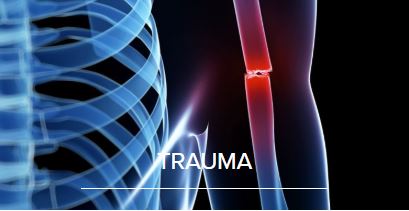Every month, JBJS publishes a review of the most pertinent and impactful studies reported in the orthopaedic literature during the previous year in 14 subspecialties. Click here for a collection of all such OrthoBuzz specialty-update summaries.
This month, co-author Mai P. Nguyen, MD summarizes the 5 most compelling findings from the >30 studies highlighted in the recently published “What’s New in Orthopaedic Trauma.”
Proximal Humeral Fracture
–The DelPhi (Delta prosthesis-PHILOS plate) study, a multicenter, single-blinded, randomized controlled trial (RCT), evaluated the outcomes of reverse shoulder arthroplasty vs open reduction and internal fixation for displaced proximal humeral fractures in elderly patients. The results favored reverse shoulder arthroplasty (mean 2-year Constant-Murley score of 68.0 vs. 54.6 points for the 2 groups, respectively).
Hip Fracture
–An RCT comparing hemiarthroplasty with or without cement in elderly patients with a displaced intracapsular fracture of the hip found better results for cemented hemiarthroplasty1. The number of mortalities was slightly higher in the uncemented group, although not significantly so (64 patients compared with 51; p 0.18). Although pain scores and reoperations were similar between the groups, better recovery of mobility was noted for the cemented group.
Proximal Femoral Fracture
–Another recent RCT investigated the efficacy of a preoperative fascia iliaca compartment block (FICB) for patients with proximal femoral fractures (neck, intertrochanteric, or subtrochanteric regions)2. Lower morphine consumption (0.4 vs 19.4 mg; p = 0.05) and greater patient-reported satisfaction (31%; p = 0.01) were noted for the FICB cohort.
Ankle Fracture
–Among patients treated for unstable, rotational-type ankle fractures, a prospective RCT compared weight-bearing at 2 vs 6 weeks postoperatively3. Early weight-bearing at 2 weeks was associated with higher EuroQol-5 Dimension (EQ-5D) visual analog scale (VAS) scores at the 6-week follow-up. No difference, however, was seen at later follow-up time points.
Recovery After Trauma
–The impact of trauma recovery services (TRS), which provide education and psychosocial support to patients with trauma and their families, was assessed in a recent study4. A total of 294 patients with operatively treated extremity fractures were prospectively surveyed. Injury, social, and demographic characteristics were studied for a possible association with patient-satisfaction scores. Use of TRS was the greatest predictor of better overall care ratings.
References
- Parker MJ, Cawley S. Cemented or uncemented hemiarthroplasty for displaced intracapsular fractures of the hip: a randomized trial of 400 patients. Bone Joint J. 2020 Jan;102-B(1):11-6.
- Thompson J, Long M, Rogers E, Pesso R, Galos D, Dengenis RC, Ruotolo C. Fascia iliaca block decreases hip fracture postoperative opioid consumption: a prospective randomized controlled trial. J Orthop Trauma. 2020 Jan;34(1):49-54.
- Schubert J, Lambers KTA, Kimber C, Denk K, Cho M, Doornberg JN, Jaarsma RL. Effect on overall health status with weightbearing at 2 weeks vs 6 weeks after open reduction and internal fixation of ankle fractures. Foot Ankle Int. 2020 Jun;41(6):658-65. Epub 2020 Mar 6.
- Simske NM, Benedick A, Rascoe AS, Hendrickson SB, Vallier HA. Patient satisfaction is improved with exposure to Trauma Recovery Services. J Am Acad Orthop Surg. 2020 Jul 15;28(14):597-605.




Thank you for this review.
I would suggest abstaining from conclusions like ‘there was a trend toward a difference’ (There was a trend toward a higher mortality rate in the uncemented group……), because it factually means that you could show NO difference!!
Yours sincerely
Henk Eijer, MD PhD
Thank you for this comment. We have attempted to clarify the point.